What to see in Serengeti national park
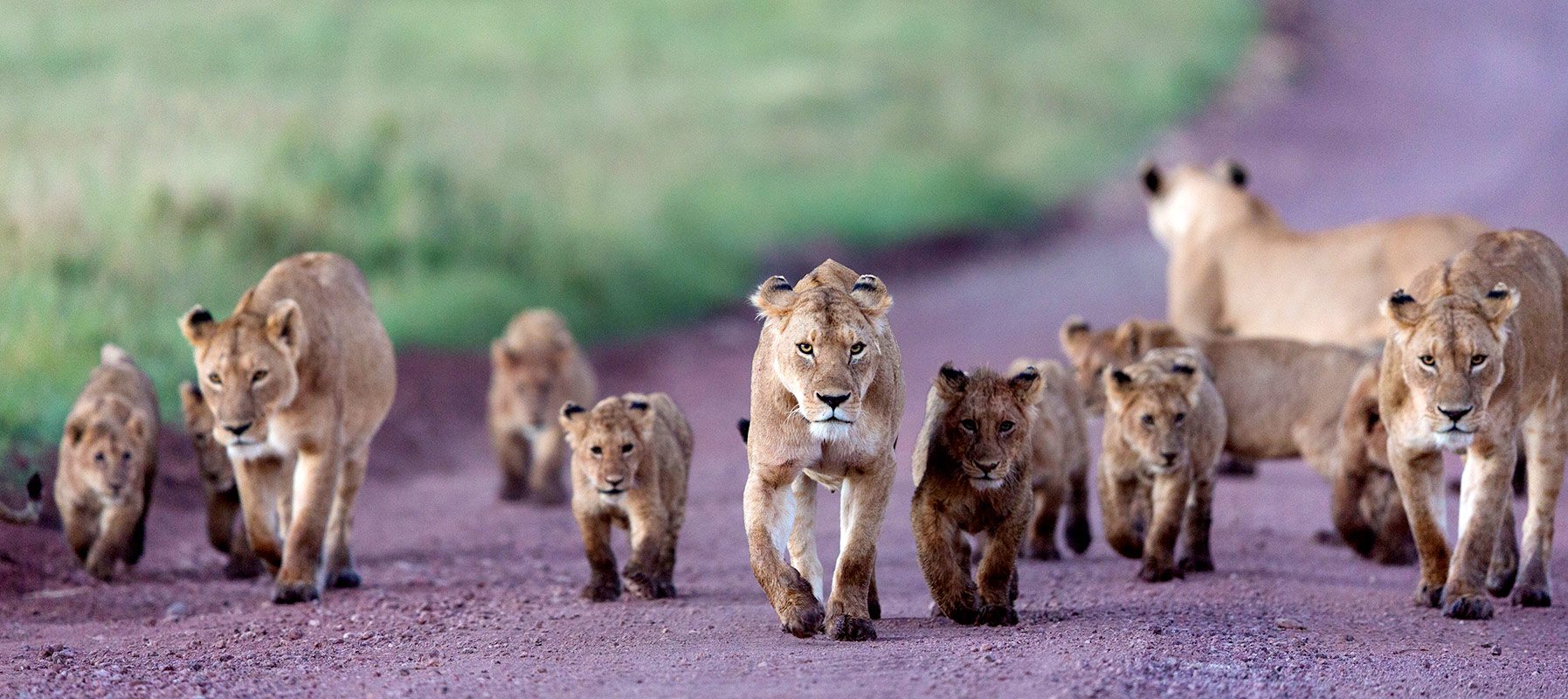
What to see in Serengeti national park: Serengeti national park is a UNESCO World Heritage and one of the great destinations in the world for Africa wildlife safaris, Serengeti national park is located in northern region of Tanzania bordering Masai Mara national reserve in the north. Serengeti national park is a classic Tanzania safari destination covering an area of 14,763 square kilometers dominated by rolling grasslands, savannah grasslands, riverine forest and woodlands.
Serengeti national park comprises of many tourist attractions to see while on your Tanzania visit in the park, attractions/ things to see in Serengeti national park include
- Wildlife
Serengeti national park is one of the best destinations for Tanzania wildlife tours and a great habitat for a variety of wildlife species including the big five, carnivores, reptiles and primate species. The big five in Serengeti national park include lion, leopard, buffaloes, rhinos and leopards, other animals include topis, elands, coke’s hartebeests, giraffes, waterbucks, warthogs, impalas, hippopotamus, aardvark, aardwolf, bat eared fox, ground pangolin, crested porcupine, 3 species of hyrax, cape hare and species of antelopes such as eland, klipspringer, roan antelope, bushbucks, greater kudus, fringe-eared oryxes and dik-dik.
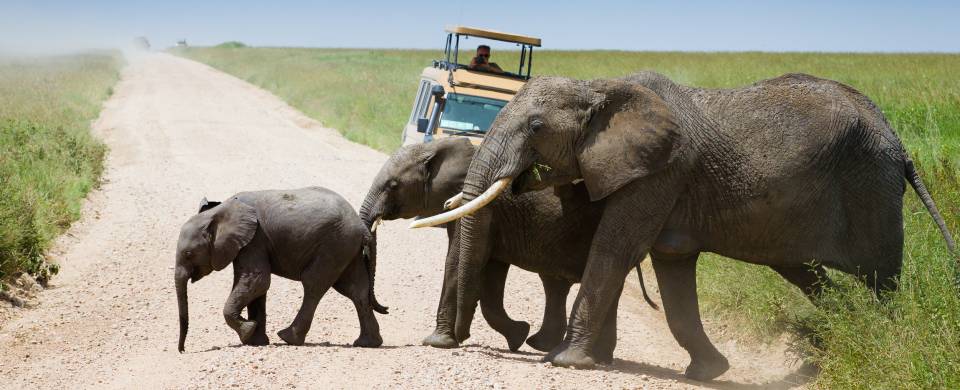
The big five is the popular tourist attraction in Serengeti national park for Tanzania game viewing tours, Serengeti national park is believed to host the largest population of lions on the African continent with over 3,000 lions living in the Serengeti ecosystem. Leopards in Serengeti national park are present in all areas of the park however they are commonly seen in the Seronera valley and over 1000 individuals live in the park. Elephants in Serengeti national park are recorded to be more than 5000 individuals and they are best found in the northern region of the park. Rhinos (eastern black rhinoceros) are commonly sighted around the kopjes found in the centre of the park and African buffaloes in the park are recorded to be over 53,000 individuals.
Carnivores species calling Serengeti national park a home include cheetahs, spotted hyenas, wild dogs, jackals, African golden wolves, stripped hyenas, serval cats, honey badgers, 7 species of mongoose, species of otters and bat – eared foxes and many more. Primates in Serengeti national park include yellow and olive baboons, vervet monkeys, black and white colobus monkeys, these primates live in the forested areas of the Grumeti River Valley.
Primates in Serengeti national park include Nile crocodiles, leopard tortoise serrated hinged terrapin, rainbow agama, Nile monitor, chameleons, African python, black necked spitting cobras, puff adder, black Mamba
- Birdlife
Serengeti national park is an impressive Tanzania destination for tourists interested in birding safaris, the park is a home to over 500 bird species including masai ostrich, kori bustards, secretary birds, helmeted guinea fowls, yellow billed stork, southern ground hornbill as the notable bird species in the park. Other bird species to see in Serengeti national park include Black-headed gonolek
Fische’s lovebird, Grey-backed fiscal, Grey-breasted spurfowl, Grey-crested helmet-shrike, Hildebrandt’s starling, Red-capped robin-chat, Rufous-tailed weaver, Rüppell’s vulture, Southern ground hornbill, Schalow’s turaco, Silverbird, Usambiro barbet, Verreaux’s eagle, yellow-throated sandgrouse and many more.
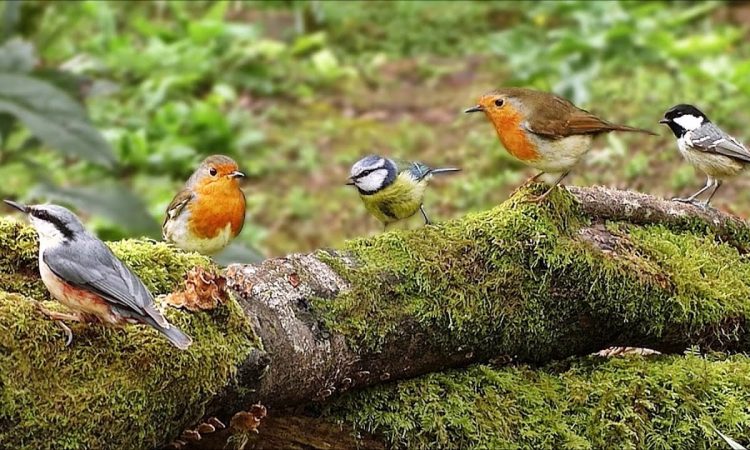
- Wildebeest migration
Wildebeest migration in Serengeti national park is the legendary and greatest wildlife migration ever noticed, the great wildebeest migration is an annual continuous movement of huge numbers of wildebeests accompanied by thousands of zebras and gazelles searching for food and water. The migration of these animals happens between Serengeti national park and Masai Mara national park and it is the major highlight if Tanzania wildlife tours.
Over 1.5 million wildebeests, 250,000 zebras and 300,000 gazelles participate in the great wildebeest migration migrating to Serengeti national park, the migration involves the most dramatic occurrence where the animals enter the waters of Mara River where they face off with crocodiles and other predators as they try to cross.
Serengeti wildebeest migration is categorized as Southern Serengeti wildebeest migration, western Serengeti wildebeest migration and northern wildebeest migration.
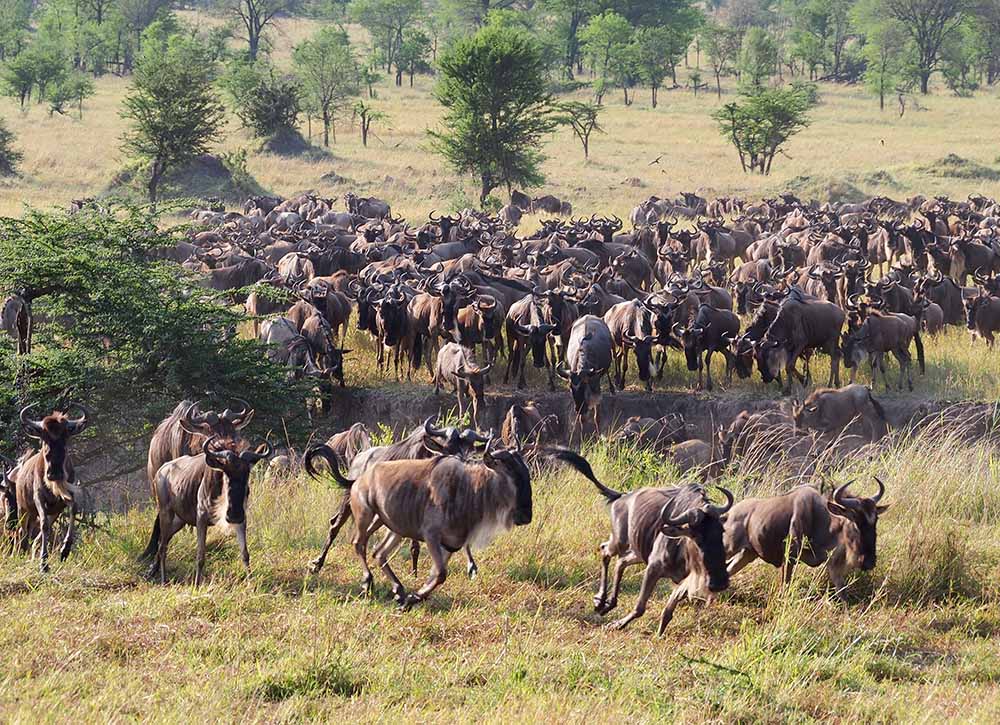
Southern Serengeti wildebeest migration
Southern Serengeti wildebeest migration starts in the late December and drags on to January which is the climax and the wildebeest start coming back to central region of Serengeti in March, this period of the migration is referred to as calving season migration taking place in the southern region of Serengeti and northern region Ngorongoro conservation area in Ndutu region.
Western Serengeti wildebeest migration
Western Serengeti wildebeest migration is one of the deadliest migration in Serengeti national park occurring around April to early June during the rainy season, wildebeest, zebras and gazelles move across the western corridor of Serengeti south of Grumeti river. This is one of the deadliest migration because of the high concentration of predators both water and land that are lions, crocodiles and leopards.
Northern wildebeest migration
Northern Wildebeest migration happens from July to September where animal cross Mara river to Masai Mara national reserve, this is the most spectacular migration and it is recognized as one the seven wonders of animals on earth. This migration takes place in the extreme north of Serengeti national park around Lamai Triangle.
- Olduvai Gorge
Olduvai Gorge is an archaeological site in Tanzania and one stop destination to visit while on a Tanzania safari in Serengeti national park, Olduvai Gorge offers an opportunity to learn about archaeology, history and the African ancient hominid ancestors. Olduvai Gorge is a canyon carved by the water in the southern Serengeti plains famed as a rich treasure for human and animal fossils, Olduvai Gorge is known as a cradle of mankind and consists of a museum where human remains discovered by Dr. Leakey are displayed.
- Retina Hippo pool
Retina Hippo Pool in Serengeti national park is situated in about 5 miles north of the magnificent Seronera Valley, Retina Hippo Pool commonly known as hippopotami is formed as a result of Seronera and Orangi River converging at one spot. Retina Hippo Poll is the best site in Serengeti national park for Tanzania wildlife viewing safari for animals like baboons, impalas, giraffes, elephants, crocodiles and hippos. Over 200 hippos are noticed to be living at the banks of pool, Retina hippo pool offers great photography opportunity.
While visiting Retina Hippo pool, tourists are permitted to leave their vehicles and view the hippos, crocodiles are also seen basking on the shores of the hippo pool and elephants also visit the pool to drink water.
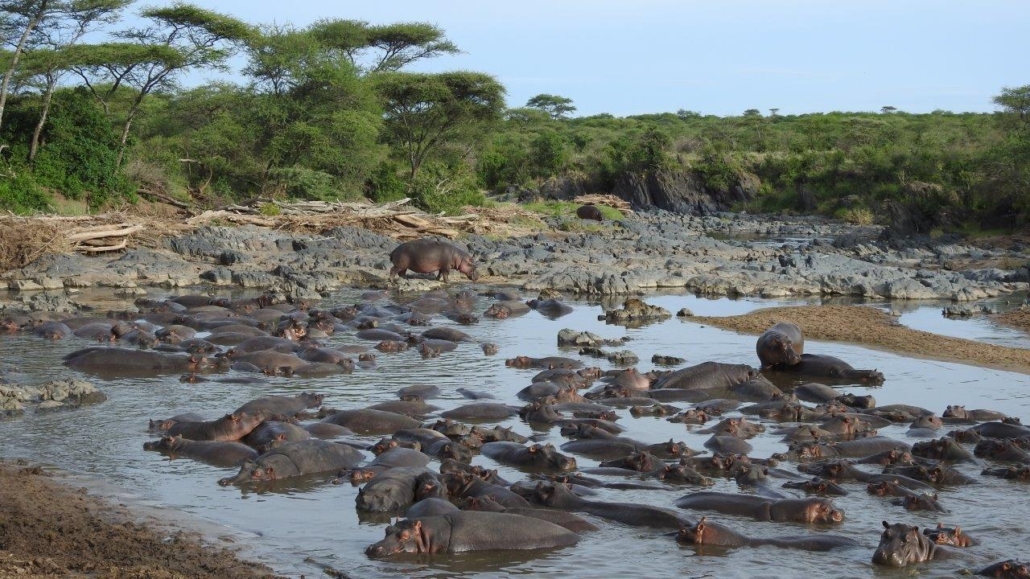
- Grumeti River
Grumeti River in Serengeti national park is a must visit site and it is one of the popular attractions in the park, Grumeti river flows in west wards movement across the top half of Serengeti national park and it empties into Lake Victoria. Grumeti bisects Serengeti national park into Upper Grumeti which is referred to as Northern Serengeti and Lower Grumeti also referred to as Western Serengeti.
Grumenti River is a seasonal river and as it flow, it forms permanent deep water pools which are a home to huge numbers of crocodiles and a best site to view them while in Serengeti national park. Grumeti River is surrounded by woodlands including acacia tree which inhabit various species birds and other animals such as Masai giraffes and many more.
Grumeti River is an important site during the great wildebeest migration, thousands of wildebeests accompanied by Thomson gazelles and zebras and they cross through the upper Grumeti twice a year in the period of July and August on the northward migration and September to November in the southward migration.
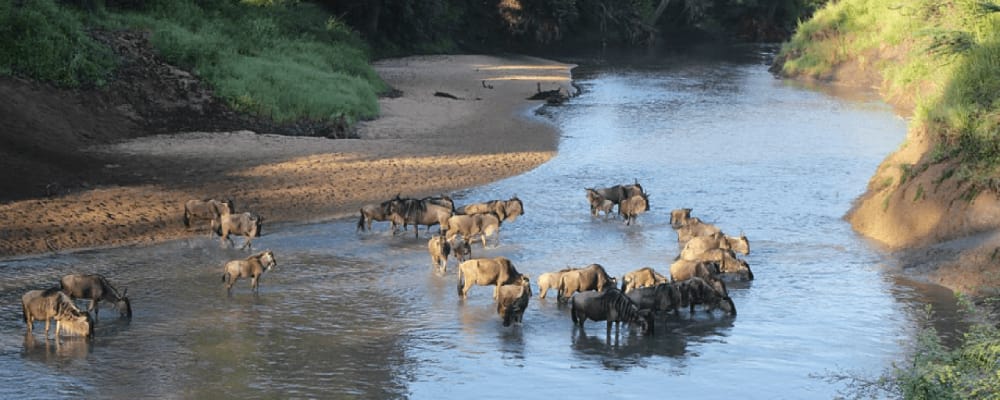
- Seronera valley
Seronera valley in Serengeti national park is found in the central Serengeti and it one of the most excellent areas for Tanzania wildlife safaris, Seronera valley is traversed many several perennial rivers which attract and enable animals to thrive in the valley most especially large predators. Seronera valley has been recognized as the best place in Africa to watch large predator and carnivores, the valley offers excellent views of large predators such as lions, leopards, hyena and cheetah.
Seronera Valley is a residence to other wildlife species such as buffaloes, hippos, topis, hartebeests, giraffe, impalas, warthogs, Thomson gazelles and many more.
- The masai local people
The Masai local people were the first inhabitants of the plains of Serengeti national park before it was gazette as a national park, the Masai people are ancient nomadic pastoralists who used to graze their animals in the savannah plains of the park.currentrly the Masai live in the communities across the boundaries of Serengeti national and they are visited while on a Tanzania tour in Serengeti national park. Visiting the masai people offers an opportunity to learn more about the rich culture and history of these people, be entertained by their local dances and songs, interact with the elders and many more.


